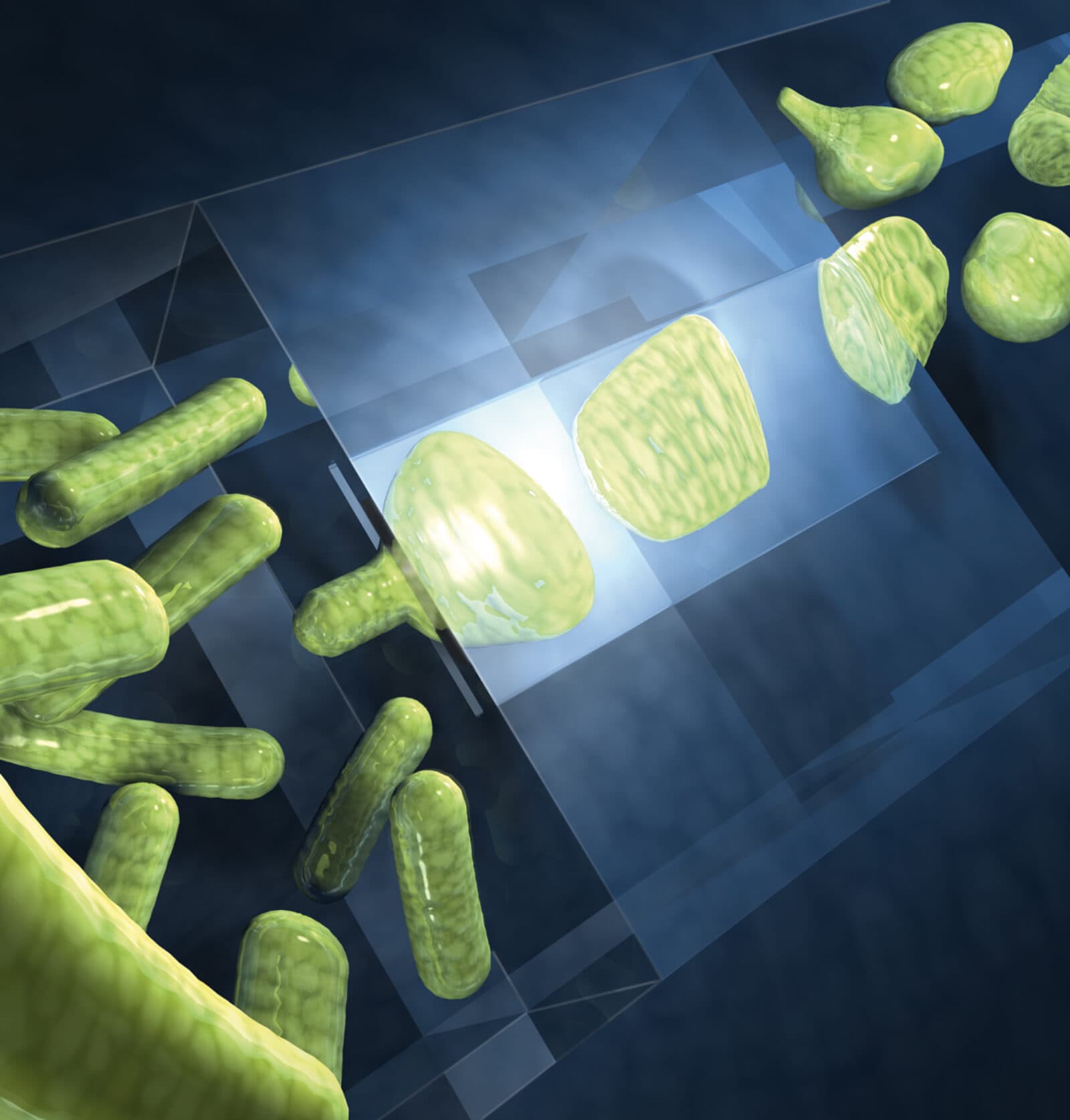Even When Faced with Nanoslits, Bacteria Conforms to Tight Spaces

(Originally published by Delft University of Technology)
August 17, 2009
It appears that bacteria can squeeze through practically anything. In extremely small nanoslits they take on a completely new flat shape. Even in this squashed form they continue to grow and divide at normal speeds. This has been demonstrated by research carried out at TU Delft’s Kavli Institute of Nanoscience.
The results will be appearing this week in the online edition of the prestigious scientific journal Proceedings of the National Academy of Sciences (PNAS) and as the cover article in the September 1 print issue of PNAS.
Using nanofabrication, Delft scientists made minuscule channels, measuring a micrometer or less in width and 50 micrometer in length, on a silicon chip between tiny chambers containing bacteria. Subsequently they studied the behaviour of Escherichia. coli and Bacillus. subtilis bacteria in this artificial environment. The bacteria were genetically modified so that they were fluorescent and could easily be followed using a special microscope.
Under normal circumstances these bacteria swim and this research showed that they retain this motility in surprisingly narrow channels. They swam just as actively as usual even in channels that were only 30 percent wider than their own diameter (of about 1 micrometer).

Artist’s impression of bacteria (eft) squeezing through a nanoslit (middle), after which they come out again in unusual shapes (right). Note that the bacteria in the nanochannels are flattened. (Credit: Cees Dekker, TU Delft / Tremani)
In even narrower submicron channels the bacteria stopped swimming, and an unexpected effect took place: The bacteria were able to make their way through ultra-narrow passageways in another manner, that is by growing and dividing. The researchers found that this way, E. coli bacteria could squeeze through narrow slits that were only half their own diameter in width.
Post-doctoral researcher, Jaan Männik: “This took us totally by surprise. The bacteria become completely flattened. They have all sorts of peculiar shapes both in the channels and when they finally come out at the other side. What is really remarkable, however, is that in the channels, and therefore under extreme confinement, they continue to grow and divide at normal speeds. Apparently their shape is not a determining factor for these activities.”
The flat bacteria form a new phenotype,. According to the researchers, this form may be more common than one might think. The bulk of the biomass on Earth is to be found under the ground. Here, bacteria often live in spaces that measure around a micrometer.
The study suggests that many more bacteria may be present in small spaces than was always thought. This may have direct consequences, for example for membrane filters (with tiny pores) for water treatment and for medical applications, such as pacemakers or other implants, where bacteria must be excluded as much as possible. The results of the study also provide more fundamental understanding of the behaviour of bacteria that are ‘locked up’ in nanosized environments.

Experimental shot of E. coli bacteria in a nanoslit. The illustration (bottom left) shows the normal cylindrical shape of these bacteria. The main figure shows the peculiar shapes of the flattened bacteria.
Little is known about the effect of this sort of confinement on the behaviour of bacteria as yet. According to Prof. Cees Dekker, this has to do with the required combination of very different disciplines: “Microbiologists do not generally engage in nanofabrication, which enables us to examine this area under controlled conditions, and nanoscientists usually know little about the behaviour of bacteria. My colleague, Juan Keymer, an evolutionary biologist, and I are now trying to combine these disciplines in our new Department of Bionanoscience. And this is leading to all sorts of new discoveries.”
The research results will be appearing in the week beginning 17 August in the online edition of the scientific journal, Proceedings of the National Academy of Sciences (USA). The article will also be featured as the cover article in the print version of PNAS to be published on September 1, 2009.